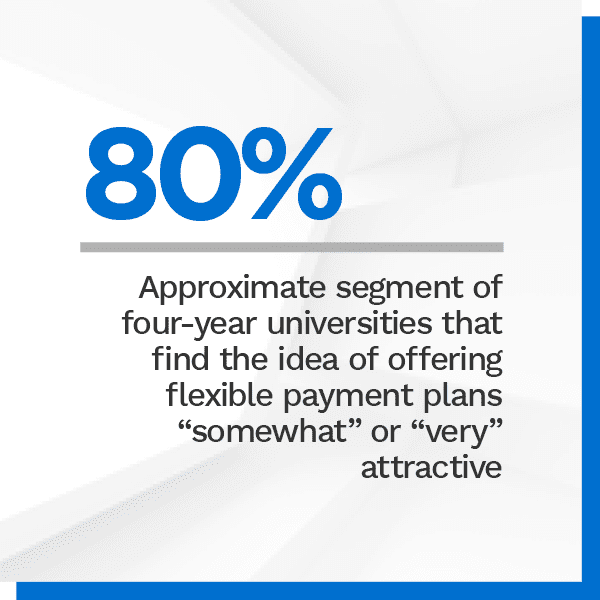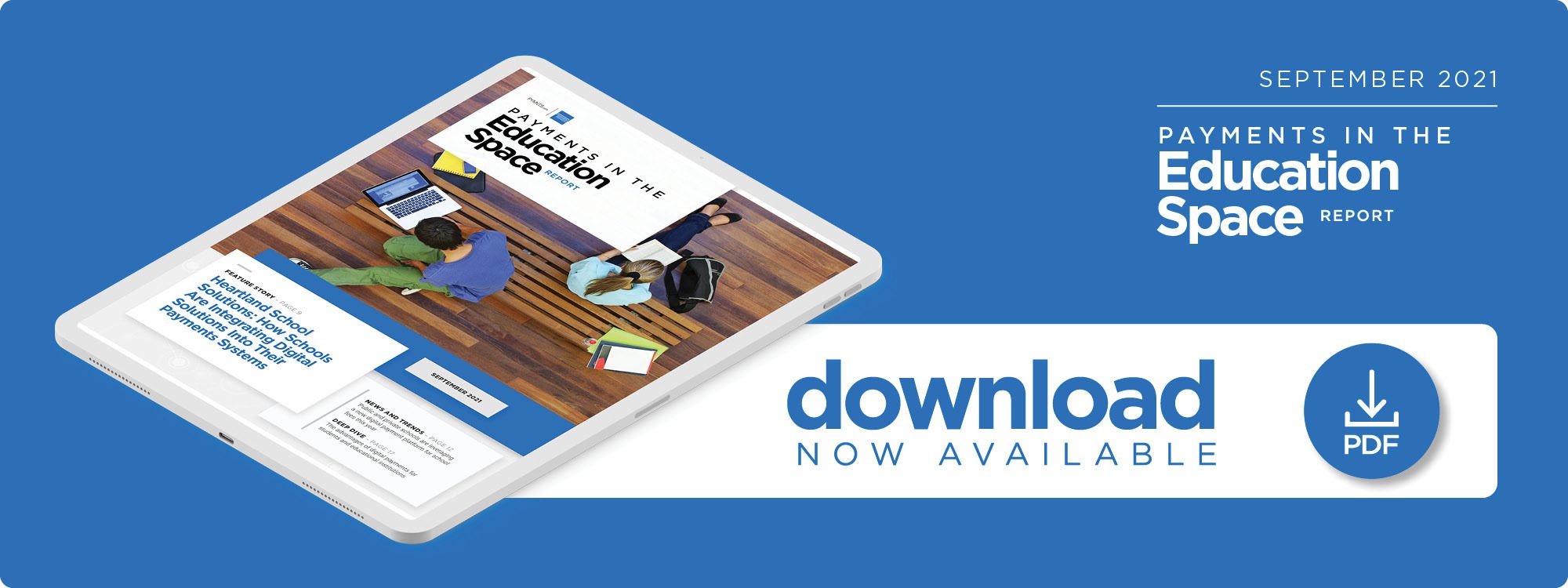School Systems Find Digital Payments’ Visibility, Cost Effectiveness Make the Grade

Digital payments were not created because of the pandemic, but global concern over health issues and subsequent closures of businesses made their adoption necessary. As life returns to normal, the digitization of the payments space during the pandemic has staying power. The demand for alternative payment options was not lost on educational institutes’ financial departments, and school leaders sought out safe and secure ways for parents to pay for their children’s education expenses.
Paper check and cash were once the most widespread payment methods for tuition, fees, and extracurricular costs, but they are not as safe as digital options. With online payment platforms, parents can view their bills and deposit funds directly into the school’s bank account through a secure payments provider, eradicating the need for children to carry cash to and from school or physically exchange cash or checks with teachers and other personnel. Digital payments for students are also proven to reduce errors and simplify transactions for both online and in-person events.
In the Payments In The Education Space Report, PYMNTS examines how educational institutions can digitize the payments experience for parents, students and school employees.
Around the Education Payments Space
School fees management services are providing secure alternatives for parents to pay for extracurriculars and field trips. Public and private schools across the U.S. are using SchoolCash Online to enable parents to use their phones and computers to view and pay students’ bills. The payment platform accepts eChecks and a number of different credit cards, and all processed payments go directly into the schools’ bank accounts. This reduces friction in the process as teachers will no longer have to collect funds from their students. Parents can also use the platform to keep track of upcoming school-related events and activities.
Mobile wallets had their day during the pandemic as adoption of touchless payments spurred by health concerns accelerated. Digital or mobile wallets were the most popular point-of-sale (POS) payment in 2020, accounting for more than one quarter of the global market. Research suggests that mobile wallets will contribute to one-third of the market by 2024. While cashless payments are not a new concept, cash payments continue to lose momentum as mobile wallet technology adoption grows. Debit and credit cards, however, are expected to remain consistent.
Contactless cards are expected to be the most in-demand touchless payment method in 2021, beating out mobile wallets. A recent report shows contactless card transactions totaled $1.7 trillion in 2020 and are projected to reach $2.5 trillion in 2021. The growth trajectory is attributed to the adoption of new payment technology among previously hesitant demographics. The convenience of contactless payments is not lost on consumers, and their popularity in the U.S. is expected to continue on an upward path.
For more on these and other stories, visit the Report’s News & Trends.
Heartland School Solutions Discusses Digital Payment Options for Bursars’ Offices
Schools around the world migrated from in-person to online or hybrid models during the pandemic. The digital shift created challenges for educational institutions because they were not technologically equipped to handle the shift at such a rapid pace. However, education leaders quickly adapted and found safe and convenient ways to address the disruption. As students revert back to in-person schooling practices, educational institutes will continue to innovate their payments space by adding more ways to pay, Jeremy Loch, senior vice president and general manager at Heartland School Solutions, told PYMNTS. To learn more about the alternative payment options countless schools are now offering, visit the Report’s Feature Story.
Deep Dive: How Digital Payment Systems Simplify the Financia l Collections Process for Educational Institutes
l Collections Process for Educational Institutes
Health-conscious consumers were quick to adopt new technology during the pandemic, and modern educational systems took notice. Some school closures lasted for a year or longer, making it difficult for bursars to collect tuition and fees for education-related expenses through previously used methods, such as cash payment and paper check. School administrators addressed this issue by turning to digital payments providers for assistance migrating financial operations from in-person to online. While many schools already had some sort of online platform for bill payments, parents and students have different preferred payment methods, particularly students who are studying abroad. For example, students studying in the U.S. may prefer to pay with a credit or debit card, while a student from Saudi Arabia might use Alipay to avoid international fees. To learn more about how alternative payments and payment plans can better serve a diverse pool of students, visit the Report’s Deep Dive.
About the Report
The Payments In The Education Space Report, a PYMNTS and American Express collaboration, explores how schools can incorporate digital payments options into their fees and tuition collection procedures for a safer, more convenient bill settlement experience.


